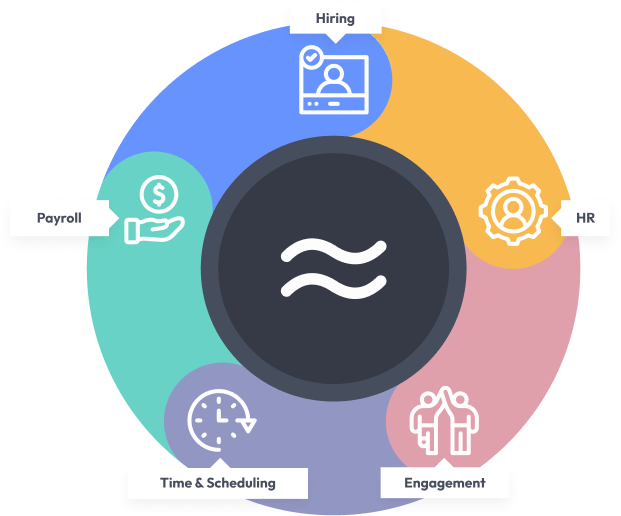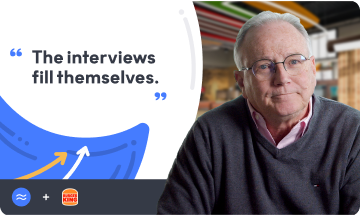How to Hire Carpet Installers: A Practical Guide for Small Business Owners
Let’s be real—when you’re looking to hire carpet installers, it’s not just about finding someone who can cut a straight line or wield a knee kicker. It’s about building trust, protecting your business, and making sure every square foot of carpet is laid with care. Whether you run a flooring shop in Kentucky or manage a bustling property management company in Chicago, the stakes are high. So, how do you find flooring workers who won’t leave you with wrinkles—literally and figuratively?
Why Getting the Right Carpet Installer Matters (And Why It’s Harder Than You Think)
Honestly, recruiting the right talent for carpet installation is a bit like finding the perfect rug for a quirky living room—there’s more to it than meets the eye. The labor market is tight, turnover is expensive, and the wrong hire can cost you thousands. According to HuffPost, high turnover costs way more than most owners realize, especially in trades where training and customer satisfaction are everything.
So, what’s the secret sauce? It starts with understanding the unique blend of technical skill, reliability, and customer service that makes a great installer. And let’s not forget compliance—one misstep here, and you’re looking at fines that could wipe out your quarterly profits.
What Makes a Great Carpet Installer?
- Technical expertise: Not everyone can stretch wall-to-wall carpet without bubbles or seams showing. Look for proven experience and certifications.
- Reliability: No-shows can derail your project schedule and your reputation. Consistency is key.
- Customer service: Installers are often the last face your customer sees. A bad attitude can undo months of sales work.
If you ask me, finding that magical combination is as much about process as it is about luck. But there are ways to stack the odds in your favor.
The Step-by-Step Process to Hire Carpet Installers Without Losing Your Mind
Step 1: Write Job Descriptions That Attract (Not Repel)
Your job ad is your handshake—make it count. Use clear language, outline expectations, and highlight what makes your business stand out. For inspiration, check out these job posting examples designed for hourly workers. Don’t be afraid to call out benefits or unique perks; as noted in SHRM research, salary and benefits are top priorities for job seekers.
Step 2: Source Candidates Where They Actually Are
Forget just posting on Craigslist or Indeed and calling it a day. The best way to find flooring workers is to meet them where they hang out—sometimes that’s Facebook groups, sometimes it’s local trade schools. For digital-savvy owners, using platforms like Instagram for hiring hourly workers can help you reach untapped talent pools.
- Digital recruiting strategies can expand your reach far beyond traditional job boards.
- Proactive candidate sourcing helps you build a bench before you’re desperate.
- Free job posting sites can save money and broaden your candidate base.
Step 3: Screen Like a Pro (But Don’t Overcomplicate It)
No one wants to wade through stacks of resumes. Automated screening tools, like those offered by Workstream’s hiring automation suite, can cut your time-to-hire in half and weed out unqualified applicants before they hit your inbox. Smart screening also reduces bias—a win-win for everyone involved.
Want more tips? See this Hiring and Onboarding: 10 Do’s and Don’ts webinar for practical advice on efficient recruitment workflows.
Step 4: Interview for Skills—and Attitude
You can teach someone how to seam carpet, but you can’t teach them to show up on time or treat customers with respect. Use structured interviews and scenario-based questions (like those in this STAR Method Guide) to assess both technical chops and soft skills.
Don’t forget to check references—one quick call can save you from a world of headaches down the road.
Step 5: Onboard Quickly and Thoroughly
The faster you get new hires up to speed, the sooner they start delivering value. Digital onboarding solutions like these onboarding templates ensure nothing slips through the cracks—especially compliance paperwork that keeps you out of legal hot water.
The Compliance & Cost Angle: What You Can’t Afford to Ignore
If you’re not careful, hiring mistakes can get expensive—fast. According to Fisher Phillips, wage and hour violations are among the most common pitfalls for small businesses in the trades. Keeping accurate records is non-negotiable; see the Department of Labor’s recordkeeping requirements here.
And here’s something else to chew on: using an all-in-one HR platform like Workstream can help you stay compliant automatically by digitizing paperwork, tracking certifications, and sending reminders before anything expires. That’s peace of mind—and potentially $25K saved on lawsuits and fees each year.
A Quick Note on Pay Compression and Retention
The labor market is shifting fast. Recent research from Robert Half shows over half of U.S. companies have dealt with pay compression in the past year—meaning new hires sometimes earn as much as seasoned vets. If you want to keep your best installers from jumping ship, consider regular reviews and creative perks (think flexible schedules or instant pay access with solutions like DailyPay integrations).
Troubleshooting: Common Pitfalls in Carpet Installation Service Recruitment
Nobody likes learning lessons the hard way—but let’s face it, mistakes happen when you’re trying to recruit carpet installers at scale. Here are some common missteps I’ve seen (and maybe made myself):
- Poor job ads: Vague descriptions attract unqualified candidates. Get specific about skills, experience, and expectations—see these creative tips for job postings.
- Inefficient scheduling: Double-booked jobs or last-minute call-outs cost money and frustrate customers. Digital scheduling tools like this 24-hour schedule template keep everyone on track.
- Lack of follow-up: Ghosting candidates (or being ghosted) slows down hiring. Automated reminders through platforms like Workstream reduce interview no-shows by up to 55%—that’s huge when every day counts.
- Ignoring culture fit: Don’t underestimate how much a toxic hire can drag down morale. Check out these qualities of great managers for ideas on building a positive team vibe.
The Emotional Side: Why This Work Actually Matters
If you ask any seasoned flooring contractor what keeps them up at night, it’s not just the fear of a crooked seam—it’s worrying about their team. A great installer isn’t just an asset; they’re part of the family. Building that kind of loyalty takes effort, but it pays off in lower turnover and higher customer satisfaction. For more on why engagement matters so much, see this piece on the real cost of employee turnover.
The Future of Hiring Flooring Installers: Tech Tools & Trends Worth Watching
The days of paper applications and phone tag are fading fast. More businesses are turning to automation—not just because it saves time, but because it delivers better results. Platforms like Workstream offer smart screening, automated interview scheduling, digital onboarding, and even integrated payroll—all designed for businesses that live and die by their hourly workforce.
- Reduce turnover by half: Streamlined hiring keeps good people engaged from day one (see key hiring stats here).
- Cut HR tool costs by 50%: Replace multiple systems with one platform (Workstream product suite overview).
- Avoid overpaying & understaffing: Smart scheduling saves hours per employee every week (see how Gap improved scheduling).
- Stay compliant automatically: Digital document storage means fewer headaches at tax time (about Workstream onboarding tools).
If you’re still using spreadsheets or sticky notes to manage your team, maybe it’s time to take a look at what modern HR tech can do for your business.
The Bottom Line: Hire Flooring Installer Talent That Sticks Around
Nobody said running a small business was easy—especially when it comes to carpet installation service recruitment. But with the right approach (and a little help from technology), you can build a team that delivers quality work and keeps customers coming back.
If you’re ready to stop sweating over no-shows, compliance headaches, or endless paperwork, consider upgrading your process with tools designed for businesses just like yours. And remember: every great floor starts with a single installer who cares enough to do the job right.
Further Reading & Resources from Workstream
- Restaurant hiring: What you need to know
- Tips for calling out benefits in job descriptions
- Full guide to being an HRIS analyst
- Salary vs hourly: Who to hire?
- Contact Workstream for hiring automation support
This article is intended as general information only and does not constitute legal advice. Always consult with an employment law professional regarding compliance in your state or region.






